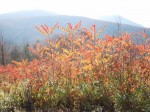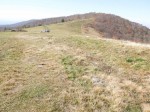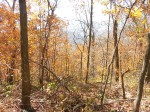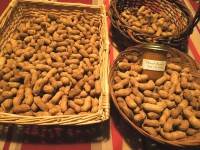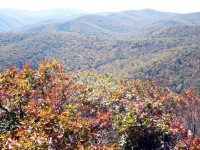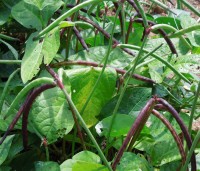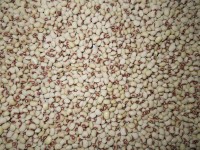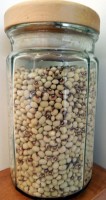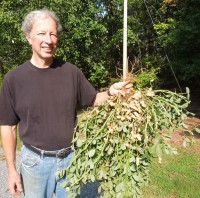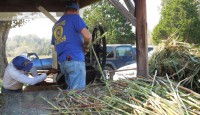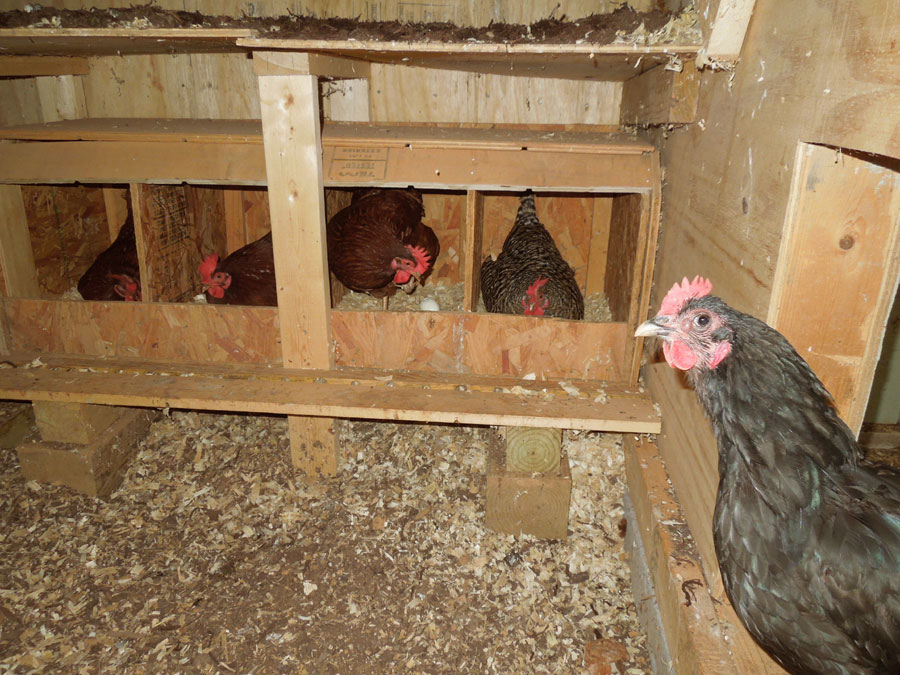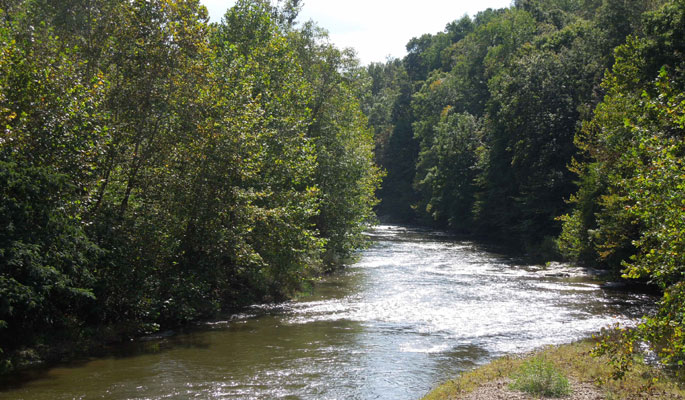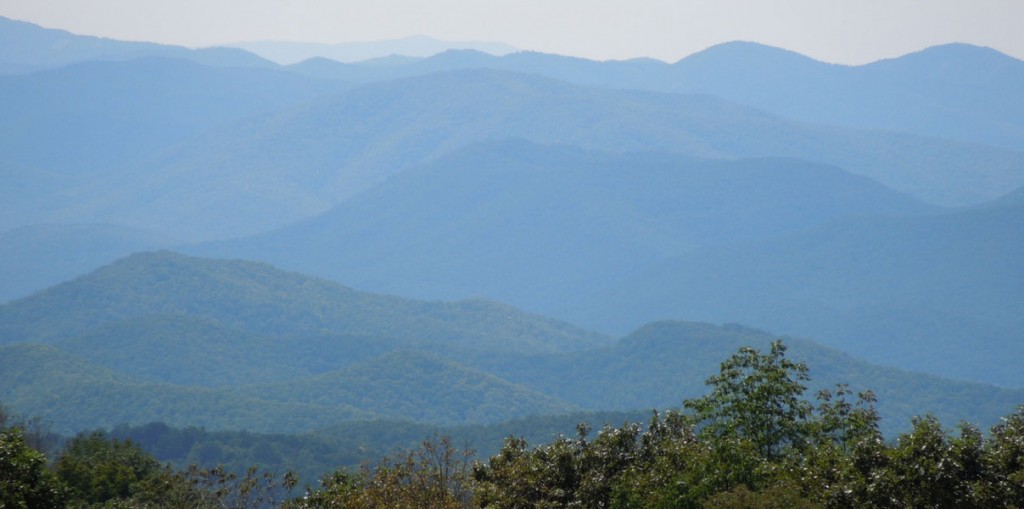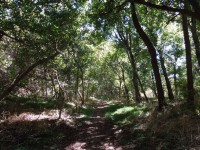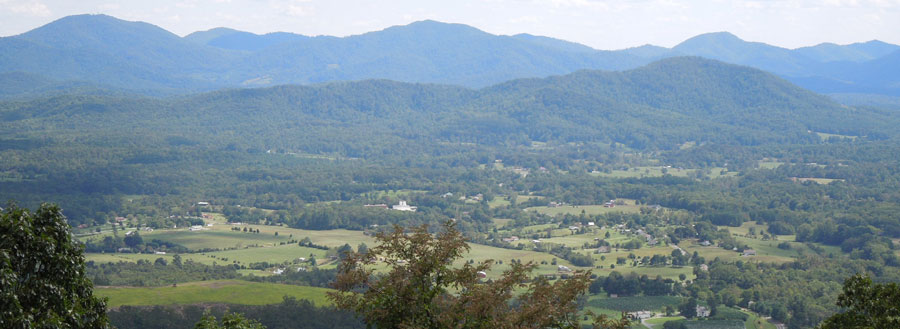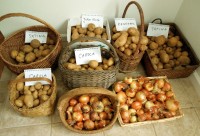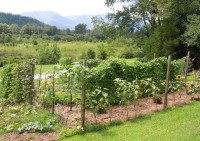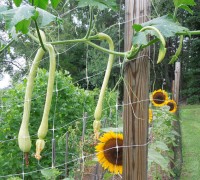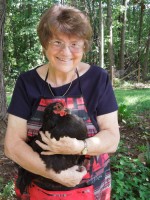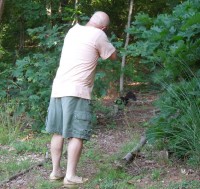 Â Â
  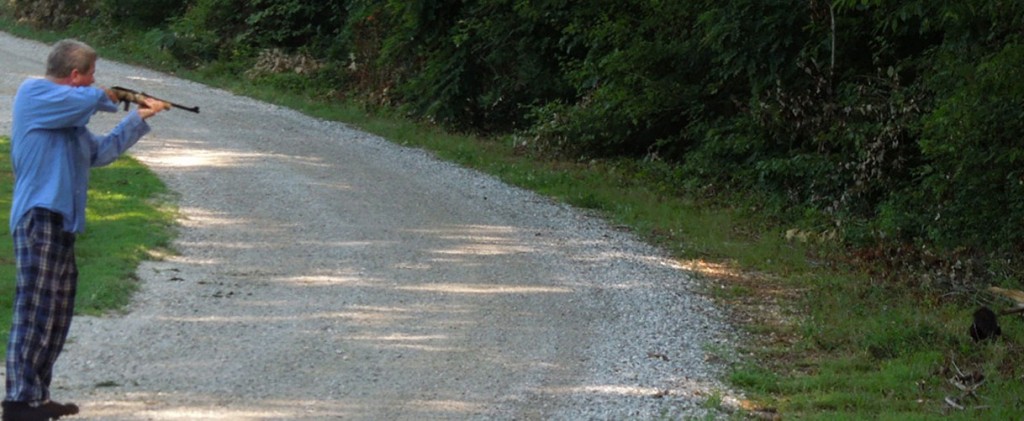
(If you click on the images for larger ones, you can make out the skunk.)
The AT hike in my previous post occurred during archery hunting season, which I’m basically ok with (using a simple economic analysis, I assume that because arrows cost much more than bullets, archers will be more careful about their targets than gun users). But gun hunting season is now beginning in earnest, and I make it a practice to stay out of the woods during that period. I don’t particularly like it, but hunting is definitely part of the local culture and fortunately nearby Shenandoah National Park, where hunting is banned, is a safe alternative.
The pictures above actually tell a different story. Our two neighbors down the hill phoned us one Sunday morning in June and said that a rabid skunk was heading up our way and they were following it with a rifle. I went out back and found that the skunk had entered our outer chicken run. However it fairly quickly left it and started into our woods. Our neighbor Frank started shooting at it, but the skunk quite nonchalantly managed to escape the bullets popping around it. It ambled down toward the road, where Derek succeeded in killing it. Just as it was hit, the skunk let out its tell-tale smell, which sent us all running!
Now the fact the skunk seemed so unconcerned about the bullets flying around it seemed to confirm the diagnosis of rabies, and that may have been so. However, another local friend who knows a lot about these things says that skunks, knowingly armed with their highly effective stink, don’t frighten easily, and so it’s possible that it was simply exhibiting the self-assured nonchalance of the species. (The frequency of run-over skunks on the road might suggest the downside of that self-assurance.) Either way, it stinks!

